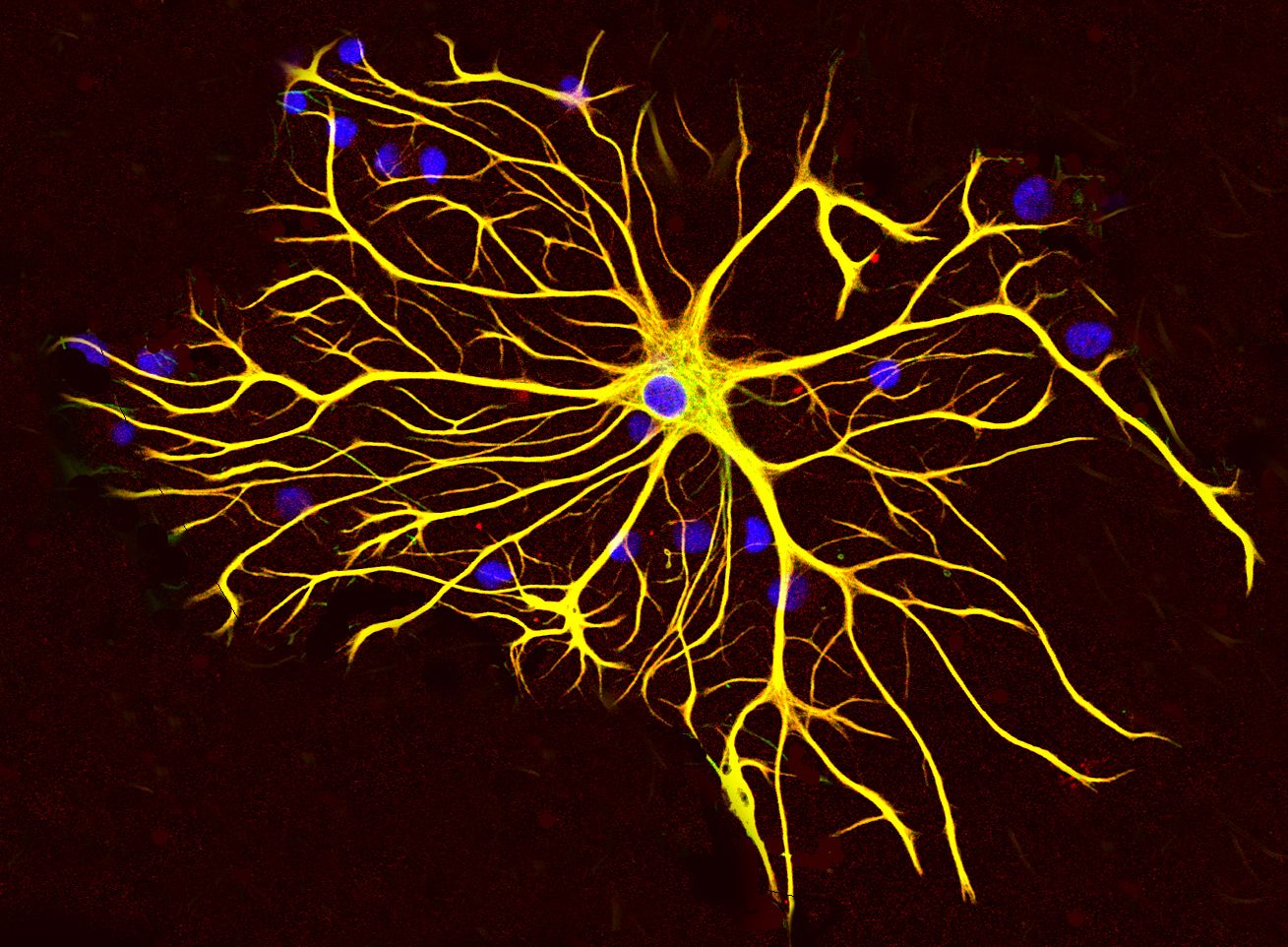🧠 These cells could play a much more important role than neurons in memory
Published by Cédric,
Article author: Cédric DEPOND
Source: Proceedings of the National Academy of Sciences
Other Languages: FR, DE, ES, PT
Article author: Cédric DEPOND
Source: Proceedings of the National Academy of Sciences
Other Languages: FR, DE, ES, PT
Follow us on Google News (click on ☆)
To understand this discovery, let's review some basics. Our brain contains about 86 billion neurons, cells that communicate with each other through electrical signals. Their connection points are called synapses. Until now, scientists believed memory formed primarily through these exchanges between neurons. But astrocytes, long considered mere "support cells," might actually actively participate in this process.

Image Wikimedia
A new lead for understanding memory
Astrocytes represent nearly half of the brain's cells. Their known roles mainly included waste cleanup and providing nutrients to neurons. But recent observations show they also communicate, not through electrical impulses like neurons, but via calcium waves that propagate through their multiple extensions.
These calcium signals appear synchronized with the activity of neighboring neurons. Even more surprising: when connections between astrocytes and neurons in the hippocampus (a key memory area) are disrupted, memories seem affected. At least that's what initial experiments on rodents reveal. This suggests these cells aren't mere spectators, but true partners to neurons.
Researchers created a mathematical model incorporating this hypothesis. Their simulation shows that by accounting for astrocytes, the brain's storage capacity could be much greater than previously assumed. A promising lead, but one that still needs confirmation through concrete experiments.
What this could change
If this theory proves correct, it would revolutionize our understanding of the brain. First, it would mean memory doesn't rely solely on connections between neurons, but also on a dialogue with astrocytes. These cells would act as "modulators," finely adjusting synaptic activity.
In medicine, this could open new avenues for understanding and treating memory disorders. In artificial intelligence, it might inspire more efficient systems, drawing from this collaboration between different cell types.
For now, all this remains hypothetical. More research is needed to verify if the brain truly functions this way. One thing is certain: these humble star-shaped cells haven't finished surprising us.